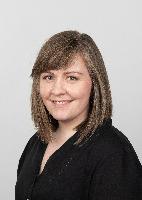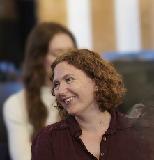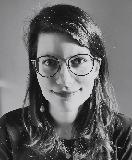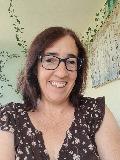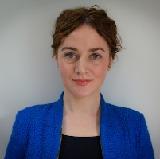Blog
Unless otherwise stated, content is shared under CC-BY-NC Licence
Preserving BITs – An Online Exhibition Featuring the Digital Preservation of a Central IT Bulletin at the University of Edinburgh
In 1990, Edinburgh University Computing Service (EUCS) launched the Bulletin of IT Services – or BITs for short. Produced by the staff in the EUCS team, BITs reported on the latest developments in communications and information technology at the University until Information Services was formed in the early 2000s.
Dream big and ‘do different’: Digital Preservation Comes to Norfolk.
Helen Busby is Archive Manager at University of East Anglia Archives.
For a small archive service, we like to dream big and ‘Do Different’ as the UEA moto goes. The inception of, and growth of our literary archive has been one of hope, ambition and the good will and generosity of our depositors. The British Archive for Contemporary Writing (BACW) lives in the library service at the University East Anglia, the home of the oldest Creative Writing MA in the UK and a centre of literary activity. Alongside the UEA archive and rare books collection BACW proactively collects contemporary literature from Doris Lessing in 1945 through the twentieth century to the poets and prose writers of the present moment.
Reflections on my first IIPC WAC, Paris 2024
Ndahambelela Hertha Iipinge is Associate Archivist at UNHCR, the UN Refugee Agency. She attended the IIPC Web Archiving Conference with support from the DPC Career Development Fund, which is funded by DPC Supporters.
Since August 2023, I have been working as an associate archivist in the digital preservation team at UNHCR, the UN Refugee Agency. My role includes managing the UNHCR Web Archive, where my responsibilities include curating and capturing essential content. I work closely with UNHCR websites owners, social media team and the Records and Archives Section Web Archiving Working Group, notifying them about scheduled website crawls to ensure content selection and inclusion. The role is crucial in maintaining optimal performance, data integrity and that the process runs smoothly and without undue strain on servers.
I also work closely with UNHCR’s web archiving service provider to oversee the crawling of our websites and social media platforms, safeguarding the online digital web legacy of UNHCR’s global efforts.
An Introduction to Disentangling Digital Preservation Risk with CHARM
Friday 5th July saw the last #DPClinic session before we take an extended break over the (northern-hemisphere) summer. The speaker was Dr Maureen Pennock (Head of Digital Collection Management at the British Library) who presented an overview of her recent work to develop the CHARM reference model for digital preservation risk, as part of her PhD thesis at the University of Dundee.
The research question that Maureen set out to address was: “How can the nature and complexity of digital preservation risk be more thoroughly and consistently represented so as to support the foundations for a more flexible yet comprehensive preservation planning risk response?”. Inspired by risk science, CHARM offers a new perspective on digital preservation risk that distinguishes between the conceptualisation of risk and its subsequent characterisation or measurement. It can be used to help produce scenario-based and holistic risk assessments that incorporate different types of characterised risks, rather than focusing on one type alone.
Advocacy never ends… but where does it begin?
Lena Böse is a student at University College Dublin
At last month’s DPC Unconference in Dublin, participants voted to have one of the spontaneous DPC member-led sessions focus on advocacy. When an Unconference participant shared their experience of institutional data loss and neglect, the group for this session came together as a supportive sounding board: They shared their own experiences openly and offered suggestions on how to overcome adversity in institutions and organizations to get the resources, time, and recognition required to successfully preserve digital material.
Let’s blog about FRED (part 2)
Yesterday afternoon we ran session 2 of ‘Let’s talk about FRED’. Read all about session 1 in my previous blog post here. Session 2 was a Members-only ‘show and tell’ about FRED, and we were lucky to be able to hear case studies from three Members on how they are using their FRED forensics workstations.
DP and Artificial Intelligence - A Four Point Plan
In June 2024 I was invited to give an opening keynote on Artificial Intelligence and Digital Preservation to a workshop of around 200 librarians organized by the International Federation of Library Associations (IFLA), sponsored by the IFLA Information Technology Section, the IFLA IT Special Interest Group in Artificial Intelligence and IFLA Preservation and Conservation Section. The workshop had the theme ‘AI and the future of digital preservation’ and my own presentation was followed by a series of case studies:
Let’s blog about FRED (part 1)
This morning the DPC hosted session one of ‘Let’s talk about FRED: Experiences with the FRED Forensic Workstation’
As noted in the event preamble, this event was born on the back of a conversation amongst DPC Members on the DPC mailing list. Someone had asked a question about how other organizations use the FRED Forensics Workstation as they were thinking of trying to make the case to get one for their own digital preservation activities. The friendly and helpful replies included information about FRED use at a variety of organizations along with a call to have a FRED ‘show and tell’ session for Members to discuss this further. As the DPC is guided and driven by our members, it seemed only right to try and provide this opportunity, and with generous offers to speak, we quickly had a full programme.
DPC Unconference 2024 Hosted by the DRI
Every year, the Digital Preservation Coalition (DPC) invites member organisations from around the world to gather together for the DPC Unconference, where professionals working in the digital preservation sector get to set the agenda and lead sessions on topics related to their area of work. This event is for DPC Members only, and is designed to privilege operational staff working directly on digital preservation. This in-person networking event provides a fantastic opportunity for the digital preservation community to share expertise and experiences and to work together to bring about a sustainable future for our shared digital cultural heritage.
Upholding Research Integrity in Preservation and Archiving
Gali Halevi is Collection Director at CLOCKSS
This blog post was originally published on the CLOCKSS website
In the dynamic world of academic publishing, maintaining the integrity of research is absolutely crucial. These journals bear the weighty responsibility of upholding the principles of research integrity and appropriate scholarly conduct.
However, in recent times, a troubling trend has emerged. Predatory journals and paper mills have begun to proliferate, casting a shadow over the sanctity of academic research. Alongside this surge, there has been a disconcerting increase in the number of retracted articles, revealing cracks in the foundation of research integrity.













































































































































